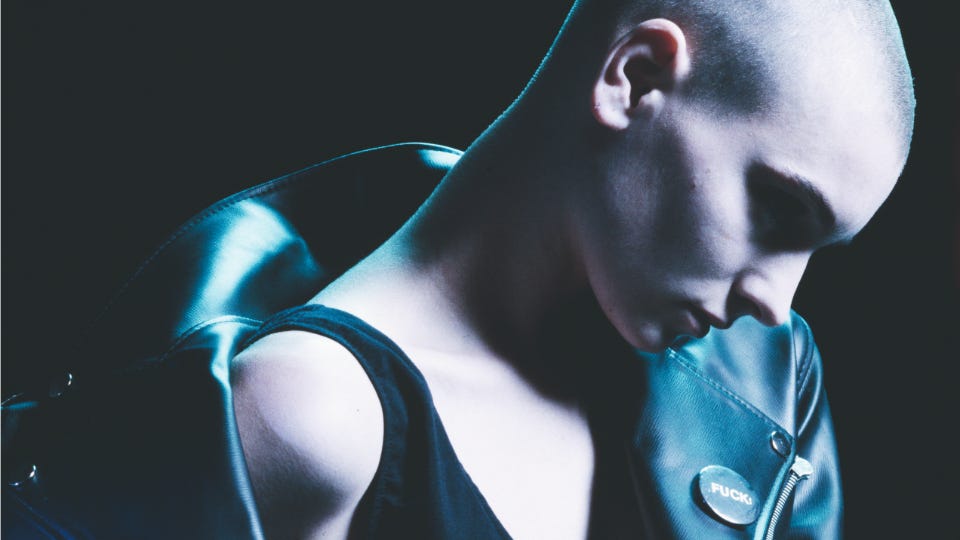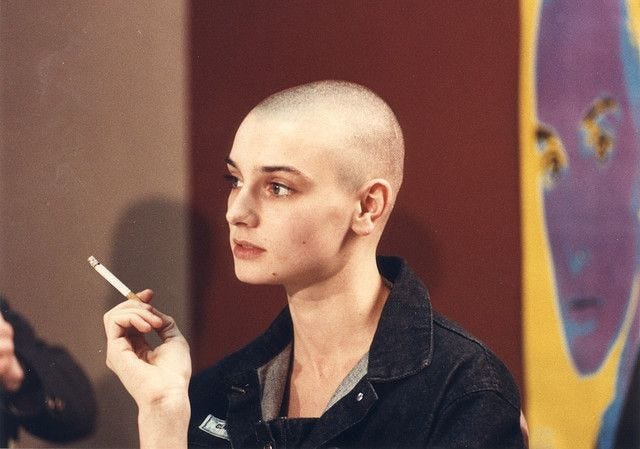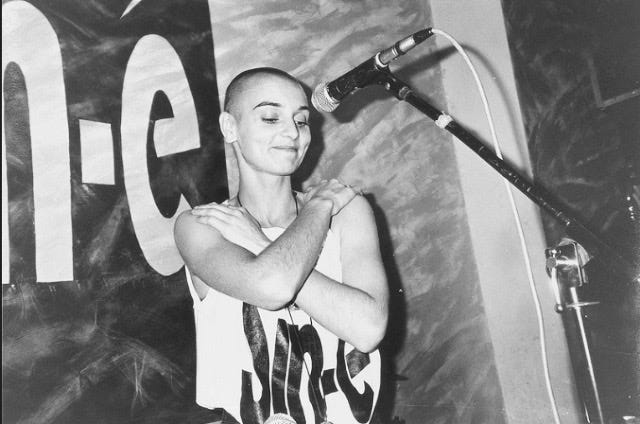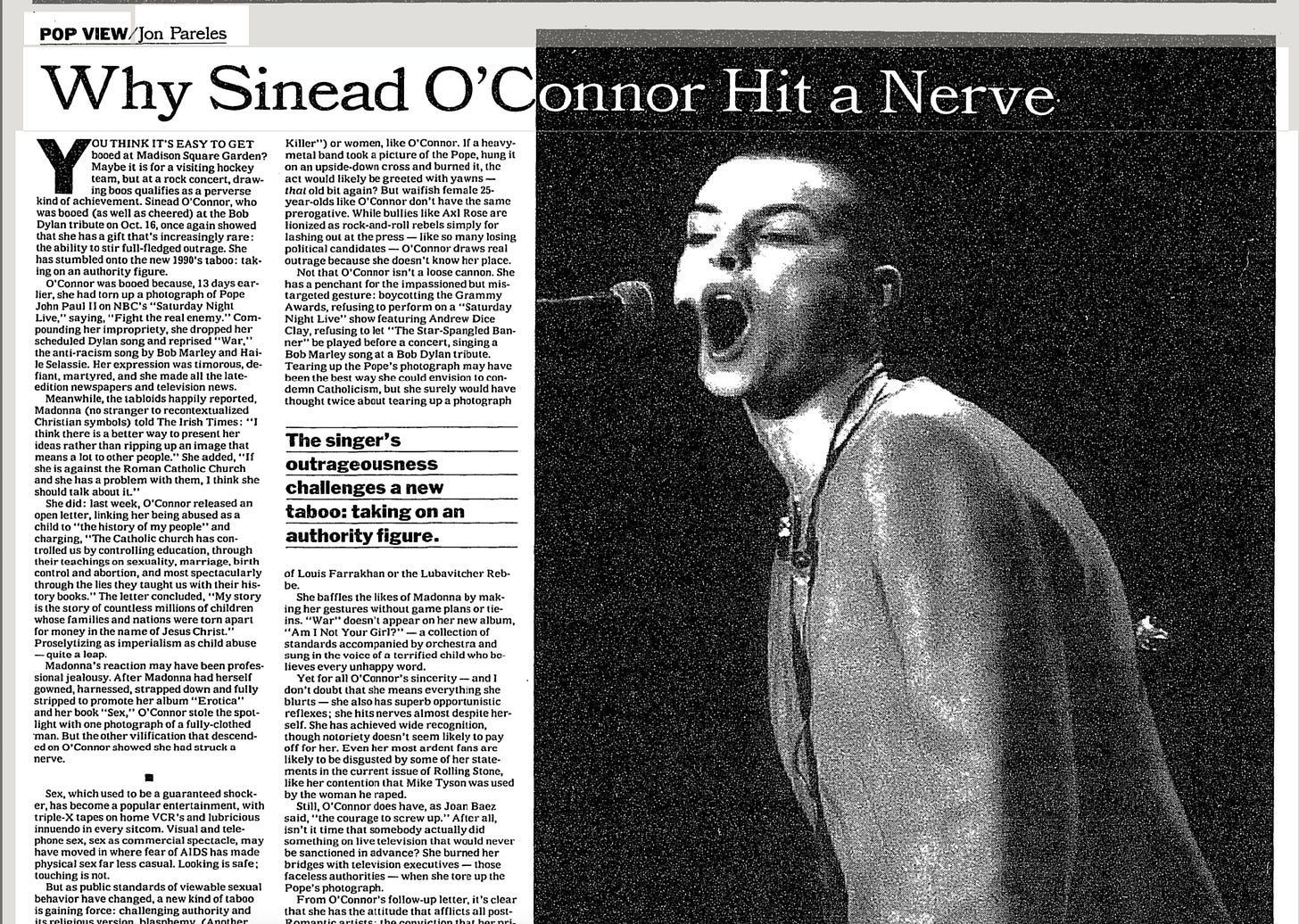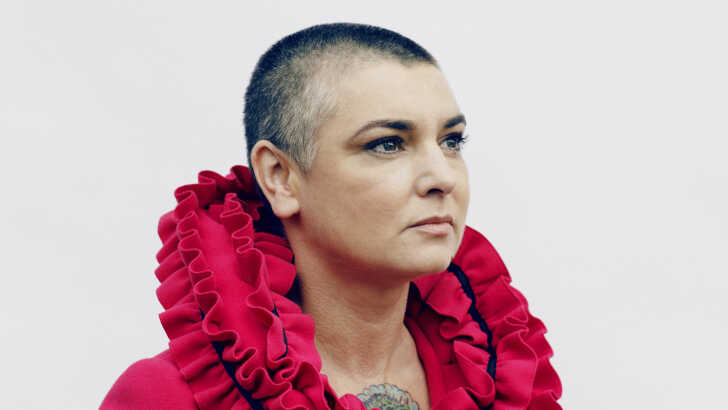"Just Call Me Joe" & The Queer Complexity Of Sinéad
The last song on Sinéad O’Connor’s 1987 debut album Lion and the Cobra is a lesser known track entitled “Just Call Me Joe”, which features Sinéad breathily singing over the harsh riff of an electric guitar the following chorus lyrics: "Don't call me sir/Just call me Joe/Don't call me lady/Just call me Joe/Don't call me mister/Oh, just call me Joe/Don't call me sweetheart/Just call me Joe". While I’m not going to try and parse out exactly what Sinéad may have meant with these lyrics, I can at least make a case here that Sinéad was undoubtedly toying around with genderfuck, and with perhaps a pointed intent, chose these particular words to close out her introductory album to the world.
And genderfuck she did from then on. For perhaps in addition to her biggest hit single, 1990’s iconic “Nothing Compares 2 U”, Sinéad is best remembered for her look—specifically her shaved bald head that became a symbol to millions of dykes, queers, rebels and outcasts. She partnered that hard-edged haircut with equally punchy clothes— Doc Martens, shredded jeans, biker jackets, etc.—yet somehow all along managed to remain looking soft, towing the perfect line between butch and femme. Gays loved her, lesbians were in love with her, and so on and so forth. But Sinéad was not just simply a queer crush—she also made significant contributions to and left a vital imprint on the LGBTQ+ community as a whole, which I will explore a bit further below. But let’s first backtrack a bit.
Sinéad Marie Bernadette O'Connor was born December 8, 1966 in Dublin, Ireland and had a troubled early life. Her parents separated when she was young and in 1979, Sinéad left her mother to live with her father, who had remarried and relocated to Alexandria, Virginia in the United States. By age 15, her shoplifting and truancy led to her being placed for 18 months in an asylum. While there, she both thrived, specifically in the development of her writing and music, but also chafed under the imposed conformity. When O'Connor was eighteen, trouble struck her again when her mother died in a tragic car accident.
As a teen, O'Connor began recording songs and performing in various bands. Her brief time as a singer for the band Ton Ton Macoute brought her to the attention of the music industry and she was eventually signed by Ensign Records. Her first album, The Lion & the Cobra was "a sensation" when it was released in 1987, reaching gold record status and earning O'Connor a Best Female Rock Vocal Performance Grammy nomination.
Her second album, 1990's I Do Not Want What I Haven't Got, gained considerable attention and was rated "second best album of the year" by NME. She was praised for her unique voice, original songs and notable appearance, having debuted her trademark shaved head, often angry expression, and sometimes shapeless or unusual clothing. O'Connor quickly became both a feminist and queer icon, particularly for queer women who began emulating her looks. The album I Do Not Want What I Haven't Got also contained O'Connor's biggest breakthrough hit, "Nothing Compares 2 U", which coincided with the release of her iconic music video, comprised of a mostly unbroken close up shot of O'Connor's shaved head, face staring head-on into the camera while she simultaneously sang and teared up. Again with the perfect harmony of hard and soft.
Throughout her career, O’Connor also frequently showed up as a queer ally. A month after conservative prime minister Margaret Thatcher rolled out the anti-gay legislation section 28 in 1988, the singer attended Pride in solidarity with the LGBTQ+ community. She performed alongside pop duo Erasure, which featured frontman Andy Bell who had come out as gay in the late ’80s. In 1990, during the AIDS crisis, O’Connor contributed to the fundraising album Red Hot + Blue with a cover of “You Do Something to Me” ( featuring Sinéad in a wig!) by gay composer Cole Porter. Then in 1992, while performing Bob Marley’s “War” on Saturday Night Live, O’Connor famously ripped up a photo of Pope John Paul II in protest of the Catholic Church’s role in covering up (same-gendered) child sexual abuse by clerics. Later in life, O’Connor continued her activism and charity work for the LGBTQ+ community. According to a former employee of Transgender Equality Network Ireland (TENI), O’Connor often donated her clothes to trans youth.
She also simply served as a role model and inspiration for many queer individuals. Upon hearing of her passing, one Sinéad super-fan named Shane O'Donoghue tweeted the following poignant observation: “I saw her in Hammersmith in 2019. The audience where I was standing was largely made up of older queer women many [of whom had] prob[ably] left Ireland in the ‘80s because of prejudice, you could tell how much Sinead meant to them. It was such an emotional, fun and unforgettable experience.”
In 2000, O’Connor herself came out as queer, when in an interview in Curve she declared that she was a dyke. A year later, however, O’Connor backtracked and admitted that it was “overcompensating of me to declare myself a lesbian.” Then in 2005, she twisted her story yet again when she told Entertainment Weekly that she was “three quarters heterosexual, a quarter gay.” In 2014 O’Connor changed her story yet again, this time making the following progressive statement when speaking with Pride Source: “I think if you fall in love with someone, you fall in love with someone. I don’t think it would matter what they were. They could be green, white and orange, they could be whatever the opposite of gay or straight is. I don’t believe in labels of any kind, put it that way. If I fall in love with someone, I wouldn’t give a shit if they were a man or a woman.”
One could argue then that perhaps O’Connor could best be labeled as pansexual. Then again, one could argue that she need not be labeled at all, since putting Sinead into some kind of definable box was never her brand to begin with. Besides, growing up in Ireland in the 1970s, O’Connor admitted that there was no such thing as “gay” in her world. “I had never even heard of ‘gay’ except for there was a female impersonator who had a big TV show in the ’70s, a guy called Danny LaRue,” she told Pride Source, “I used to love his show. But I never knew there was any such things as gay until I was 17.”
Regardless of what she was or wasn’t, for the majority of her career and her life, O’Connor was primarily battered, ridiculed or cast aside by the public for being too rebellious, too outré, and too offbeat. She was more often than not treated as a spectacle rather than as the incredible artist that she was. Then on July 26th, 2023, O'Connor passed away—too young at the age of 56—without ever having received the adequate apologies from society that she so necessarily deserved. Perhaps, O’Connor was simply far too ahead of her time, and the world just wasn’t quite ready yet to deserve her. But whether she was actually gay or not, it matters not, for she nevertheless left a lasting imprint on the LGBTQ+ community at large, which still can be seen on the shorn scalps of countless young rebellious queers walking around today. We should remember her simply as the majestic trailblazer and icon that she was and I will leave you now with my personal favorite Sinéad track, a bizarre and surprising duet from 1987 with another rough-and-tumble gal slash fellow genderfuck queer icon, MC Lyte. It’s soooooo very wonderfully ‘80s:



